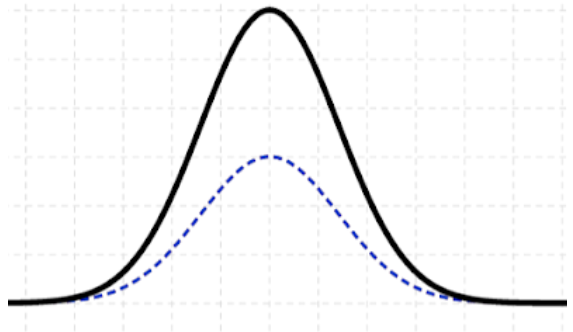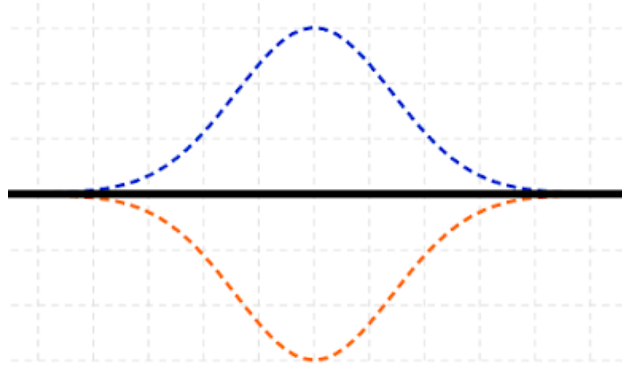
Give the condition for constructive and destructive interference in terms of phase difference and path difference.
Answer
507.3k+ views
Hint: During the phenomenon of interference, the disturbance that the two waves have formed their mean positions add up to form a new wave that has the same disturbance from the mean position as the sum of the two initial disturbances. We will give the conditions such that the final wave has twice the disturbance for constructive interference and no disturbance for destructive interference.
Complete step by step answer:
Interference is the phenomenon in which two waves superpose to form a new wave which may have an amplitude greater than, lower than, or the same amplitude as the original waves. Interference results from the interaction of waves that come from the same source or they have the same or nearly the same frequency.
Constructive interference will happen when the peaks of both the waves are at the same place and troughs of both the waves are at the same place that will happen only when the path difference is zero or some even multiple of $\pi$. There must be complete waves between them, so the path difference will need to be an integral multiple of the wavelength of the wave.

So, for constructive interference we get
Phase difference = 2nπ (n=0,1,2,3…….)
Path difference = nλ(n=0,1,2,3…….)
Destructive interference will happen when the peaks of one the waves are at the same place as the troughs of the other wave. That will happen only when the path difference is some odd multiple of $\pi$. There must be half a wave between them or one half wave in addition to any number of complete waves so, the path difference will need to be the difference of an integral multiple of the wavelength of the wave and half of the wavelength.

So, for Destructive interference we get
Phase difference = (2n+1)π (n=0,1,2,3…….)
Path difference = (2n+1)λ/2(n=0,1,2,3…….)
Note: A better interference pattern is observed when the frequencies of the two constituent waves are closer to each other. Best pattern is obtained when their frequencies are exactly the same. We will be getting constructive interference only when both the troughs are in the same place because the intensity is proportional to the square of the disturbance so the intensity will be maximum here.
Complete step by step answer:
Interference is the phenomenon in which two waves superpose to form a new wave which may have an amplitude greater than, lower than, or the same amplitude as the original waves. Interference results from the interaction of waves that come from the same source or they have the same or nearly the same frequency.
Constructive interference will happen when the peaks of both the waves are at the same place and troughs of both the waves are at the same place that will happen only when the path difference is zero or some even multiple of $\pi$. There must be complete waves between them, so the path difference will need to be an integral multiple of the wavelength of the wave.

So, for constructive interference we get
Phase difference = 2nπ (n=0,1,2,3…….)
Path difference = nλ(n=0,1,2,3…….)
Destructive interference will happen when the peaks of one the waves are at the same place as the troughs of the other wave. That will happen only when the path difference is some odd multiple of $\pi$. There must be half a wave between them or one half wave in addition to any number of complete waves so, the path difference will need to be the difference of an integral multiple of the wavelength of the wave and half of the wavelength.

So, for Destructive interference we get
Phase difference = (2n+1)π (n=0,1,2,3…….)
Path difference = (2n+1)λ/2(n=0,1,2,3…….)
Note: A better interference pattern is observed when the frequencies of the two constituent waves are closer to each other. Best pattern is obtained when their frequencies are exactly the same. We will be getting constructive interference only when both the troughs are in the same place because the intensity is proportional to the square of the disturbance so the intensity will be maximum here.
Recently Updated Pages
A man running at a speed 5 ms is viewed in the side class 12 physics CBSE

The number of solutions in x in 02pi for which sqrt class 12 maths CBSE

State and explain Hardy Weinbergs Principle class 12 biology CBSE

Write any two methods of preparation of phenol Give class 12 chemistry CBSE

Which of the following statements is wrong a Amnion class 12 biology CBSE

Differentiate between action potential and resting class 12 biology CBSE

Trending doubts
What are the major means of transport Explain each class 12 social science CBSE

Which are the Top 10 Largest Countries of the World?

Draw a labelled sketch of the human eye class 12 physics CBSE

How much time does it take to bleed after eating p class 12 biology CBSE

Explain sex determination in humans with line diag class 12 biology CBSE

Explain sex determination in humans with the help of class 12 biology CBSE




